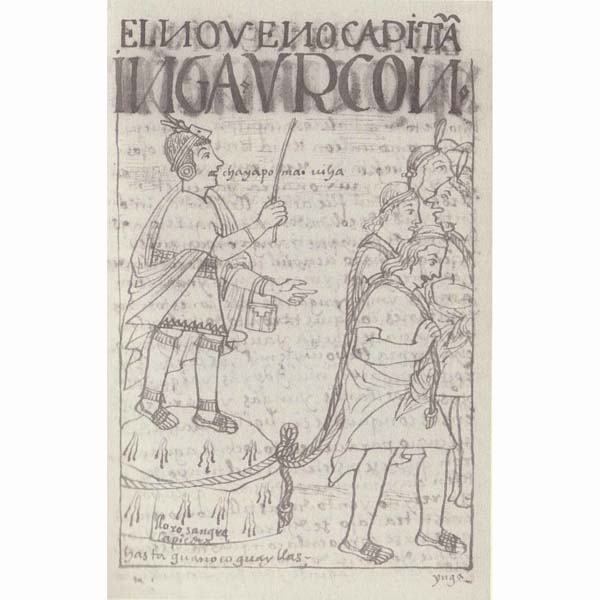Emotional Stone

Inga Urcon moving a sayk’uska – image from A Culture of Stone (Carolyn Dean)
This is a drawing from around 1615 showing a stick wielding Inka encouraging the workers to pull harder on their ropes to move the great boulder of stone. I was reminded of it when thinking about Erratic Stones.
The stone is called a Sayk’uska, which means weary or tired in Quechua, and refers to quarried rocks that were intended for use in Inka building projects, but never arrived at their destinations. They can still be identified today along roadsides throughout areas populated by the Inka.
There is a story about one of these rocks, distressed at being relocated from its quarry, and weary from travel, began to cry tears of blood. In the image (above) which accompanies the story, tears spill from the monolith that the Inka are trying to move. On the exhausted megalith, the illustrator has written ‘the stone cried blood’. Stories of ‘tired’ stones are numerous, but each relate the Inka being sympathetic. They recognise the stone’s anguish at being relocated and its refusal to co-operate with Inka builders, and leave the weary rocks where they are – these Sayk’uska stones embodying the quarry and housing its spirit.
Quarries were regarded as sacred and stories relating to specific tired stones emphasise the relationship between rock and its place of origin. Impressive Inka buildings serve to remind all who see them, of the quarry that yielded the stones.
There are theories suggesting that when the Inka completed a large building project, they left a sayk’uska unincorporated, to receive offerings as an embodiment of the quarry that had generously provided the stone.
We can only surmise – but to me it feels good to say thankyou to stone, to the earth, to respect stone. In working with stone, I have learned of its power, animacy and energy, but also of its slow, and sensitive calm. It quietly slipped into my soul.

4 Comments
I looked at that and thought it might be easier if that guy would get off the stone. But that’s very interesting about the tired stones.
I know Ellen, there he is with a stick and adding to the weight! If I had to pull it I would be too tired to move it further very quickly and happy to suggest it was on the stone’s account. I know there is slumped, but do you find weary glass?
Ha. No weary glass, just weary glass workers.
Know about that!